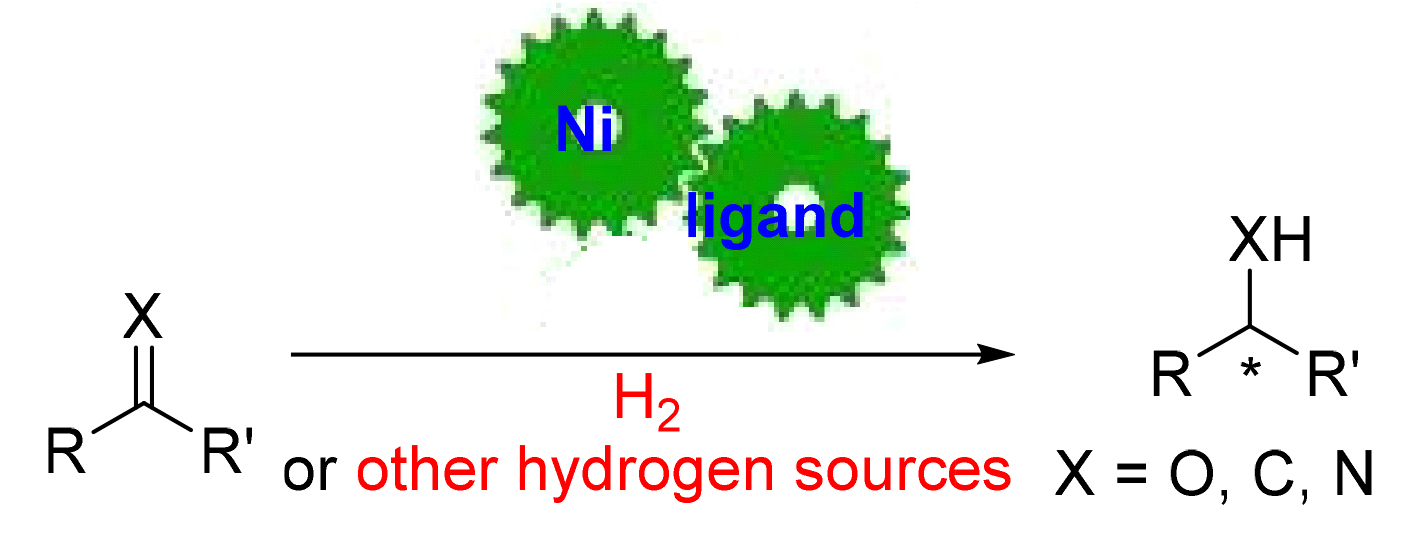摘要/Abstract

过渡金属络合物催化的均相不对称氢化反应是合成手性化合物的重要方法之一,目前主要集中于钌、铑、铱和钯等贵重过渡金属催化体系,这些贵重过渡金属催化体系面临着地球储量有限、价格昂贵和重金属污染环境等问题,因而发展地球储量丰富、价格低廉、无毒或低毒且对环境友好的铁、钴、镍和铜的均相不对称氢化反应催化体系符合现代化学可持续发展的要求和趋势.简要综述了近些年来廉价金属镍催化的均相不对称氢化反应研究领域的新进展,基于前手性不饱和化合物双键的不同类型,即碳-氧双键(C=O)、碳-碳双键(C=C)以及碳-氮双键(C=N)等,依次介绍它们的研究现状,目前已经取得了突破和可观的研究成果,系统地分析了镍催化体系中催化氢化不同类型底物的优势与不足,并展望了未来的研究方向.
关键词: 不对称氢化, 镍催化, 手性双膦配体, 手性化合物, 立体选择性
Transition metal complexes-catalyzed homogeneous asymmetric hydrogenation is an important method for the synthesis of chiral compounds. At present, it is mainly focused on precious transition metal catalytic systems, such as ruthenium, rhodium, iridium and palladium. However, they are suffered from the difficulties of limited resource, high cost and environmental contamination. Therefore, it is important and necessary to develop catalytic systems based on cheap, non-toxic or low toxic, environmentally friendly and earth-abundant iron, cobalt, nickel, copper transition metal, which are in accordance with the requirements and research trend of the sustainable development of modern chemistry. The recent progress of nickel-catalyzed homogeneous asymmetric hydrogenation of prochiral unsaturated compounds containing carbon oxygen double bond (C=O), carbon carbon double bond (C=C) and carbon nitrogen double bond (C=N) is reviewed, and some breakthroughs and considerable research results achieved are introduced. In addition, the advantages and disadvantages of different types of substrates in nickel catalyst system are analyzed, and the future research direction is prospected.
Key words: asymmetric hydrogenation, nickel catalysis, chiral diphosphine ligand, chiral compounds, stereoselectivity
PDF全文下载地址:
点我下载PDF
